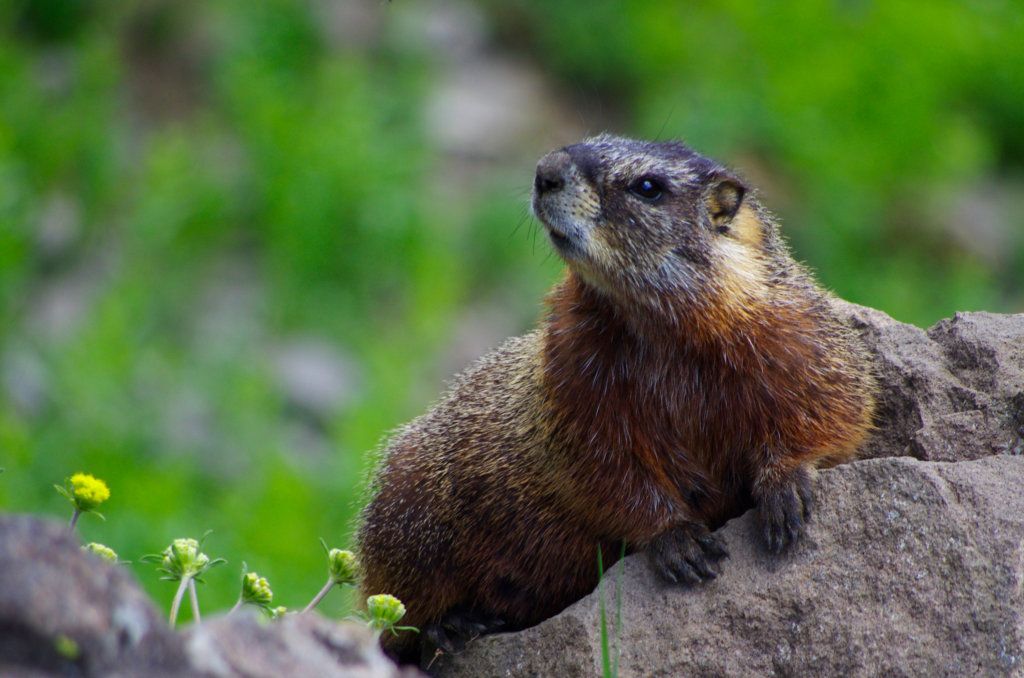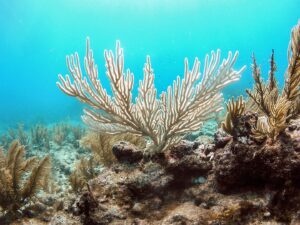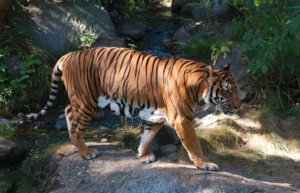There are currently an estimated 1,300 endangered or threatened animal species in North America alone, whose numbers have been severely affected by human activity. Globally, in just the past five centuries, we’ve witnessed the extinction of an equivalent of almost two species per year. That rough estimate only includes species of our knowledge. It’s crucial to understand the tremendous role humankind has had in decimating animal populations, especially in such a short amount of time in relation to the millions of years in which they have been able to thrive before human industrialization. The polar bear may be the most recognizable animal suffering from climate change, though other animals are being affected by warming temperatures, receding coastlines, and habitat loss. Here, we’ll highlight a few in North America and share what actions are being taken to ensure their survival.
Animals in the Alpine
The alpine refers to the high-elevation zone above treeline, where some climate variation can exist depending on location. Often described as a “land of extremes”, with short growing seasons, mountainous terrain and long, windy winters, it’s still a spectacular landscape with its own vegetation and distinct animals that call it home. Alpine ecosystems are closely monitored by scientists because they believe the effects of climate change here are quite apparent, demonstrated by rapid changes and dramatic shifts.
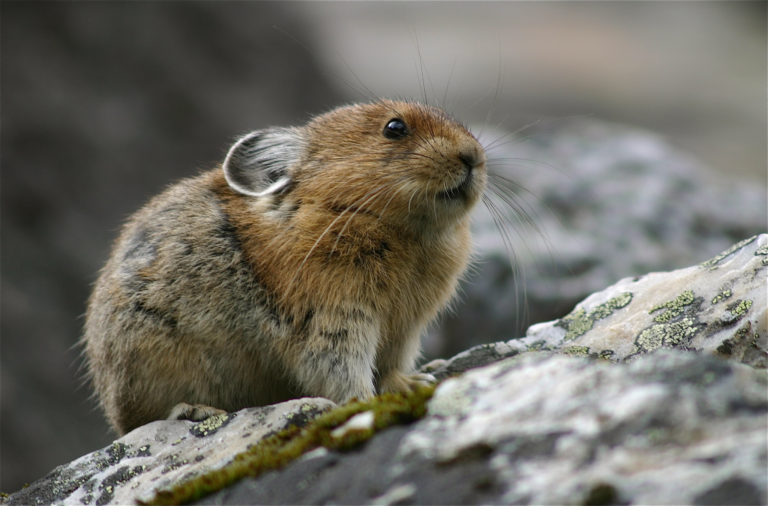
Pika
The American Pika and the Collared Pika are the two species found in North America. Scientists agree that the biggest threat to the pika is climate change. However, they’re not federally listed as an endangered species in the United States, and the Collared Pika is only listed as a “special concern” in Canada. This small relative of the rabbit shelters in rock crevices and is active year-round, never hibernating. They thrive in cool environments and are sensitive to temperatures above 77.9°F. They are already experiencing habitat loss, retreating to higher altitudes to avoid overheating, and their food storage patterns have also been disrupted. The current danger to the pika should not be minimized. If no action is taken, a continuing decline in numbers can result in their complete disappearance.
ACT: Be informed about pikas and follow organizations supporting them, such as Pikas in Peril, a collaborative research program that is monitoring them closely.
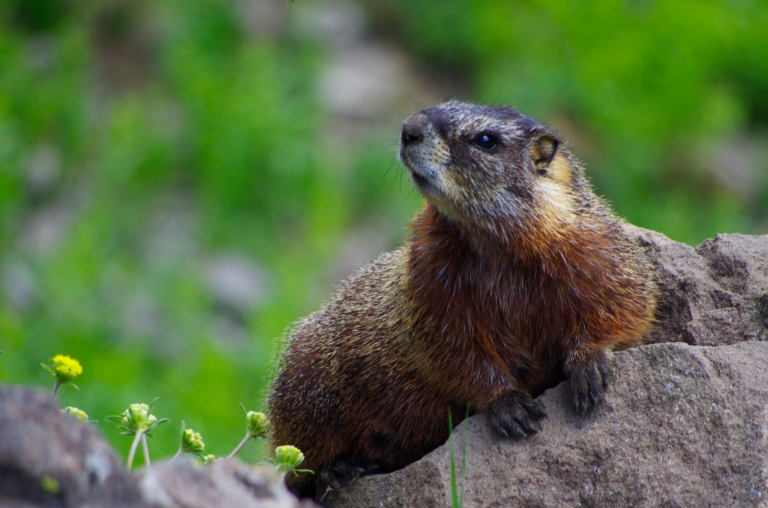
Marmot
Indigenous to North America, this member of the squirrel family is an expert hibernator, distinguished by their large, fluffy body. Overall, marmot populations are deemed stable, though particular species, such as the Alaskan and Vancouver marmot, have experienced decline. The Vancouver marmot is critically endangered and is considered Canada’s most endangered mammal. In 2007, there were only 30 Vancouver marmot in the wild, though numbers increased due to dedicated intervention. Marmots rigorously prepare and adapt for winter conditions, and their survival strategies are interrupted by ongoing, unstable weather changes. The increased temperatures have also affected the marmot’s reproduction patterns and survival rates.
ACT: Donate to the Marmot Recovery Foundation and other organizations supporting them, or spread awareness to aid their recovery.
Marine Animals
The oceans hold 96.5% of all the Earth’s water and cover 70% of the planet’s surface. Warmer ocean temperatures and melting ice shelves from climate change are affecting sea levels where many animals spend most, if not all, their lives. Pollution has also affected our oceans and their inhabitants. Marine animals are susceptible to these changes, including the next two, which can be found in and along the Atlantic in North America.
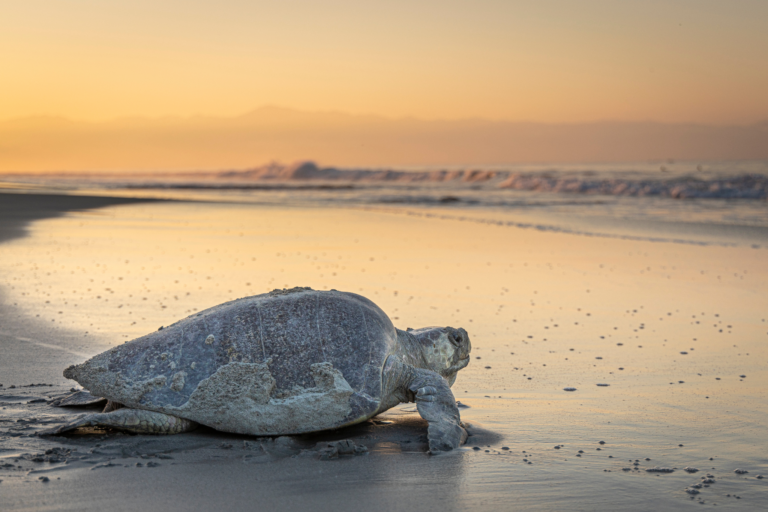
Kemp’s Ridley Sea Turtle
As the smallest and most endangered of the world’s sea turtles, great effort has been made to restore the number of Kemp’s Ridleys over the past few decades. In the 1960s, they were considered at risk for extinction. After the Deepwater Horizon oil spill in 2010, up to 20% of juvenile Kemp’s Ridleys present were killed from the exposure. They continue to face numerous threats, including oil spills, being victims of bycatch, and the predation of their eggs and hatchlings. Another major threat is climate change: rising sea levels are minimizing nesting beaches and the higher temperatures of sand can cause hazardous conditions for eggs. Before the use of turtle excluder devices (TEDs), an estimated 500-1500 Kemp’s Ridleys were killed each year. Though government intervention and implementation of new technologies have proven to play a crucial role in their protection, nesting numbers of Kemp’s Ridleys have been fluctuating for the past decade, so the fight is still far from over.
ACT: Sign petitions that will be forwarded to government representatives, spread awareness, and stay informed about the plight of Kemp’s Ridleys. If possible and within your means, consider volunteering with the Sea Turtle Science and Recovery Program.
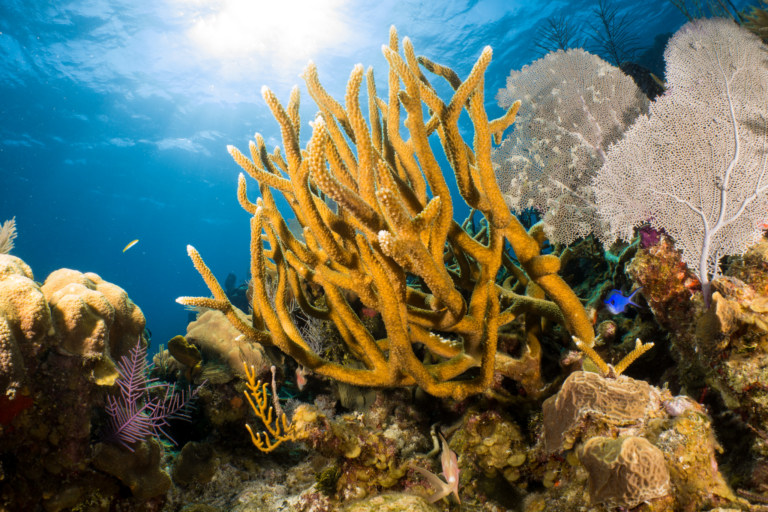
Staghorn Coral
These animals (yes, “a coral” is made up of thousands of tiny animals called polyps!) are native to the Caribbean, found in shallow reefs, slopes, and lagoons and are distinguished by their yellow, antler-shape. In the early 1980s, white band disease wiped out 97% of Staghorn coral in the Caribbean. And now, climate change is disturbing their symbiotic relationship with algae: Staghorn corals house algae and, in return, these algae provide corals with nutrients they make via photosynthesis. But warmer temperatures cause coral to evict the algae, and the loss of nutrients and energy ultimately lead to coral bleaching. They are currently considered a threatened species by the IUCN.
ACT: Learn about the involvement and actions of the National Oceanic and Atmospheric Administration (NOAA) or donate to organizations assisting with restoration efforts in the Gulf of Mexico. Sign petitions that call for the protection of Staghorn corals.
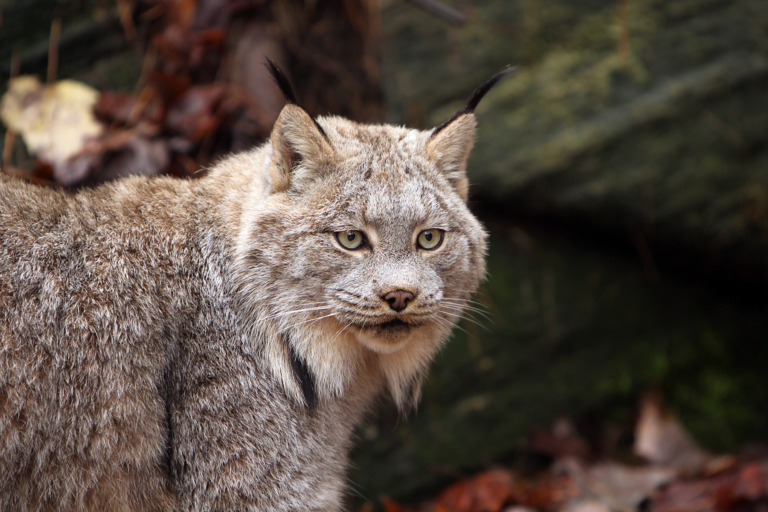
Additional North American Wildlife
Canada Lynx
These medium-sized cats, with their distinctive snowshoe-like paws, pointy, tufted ears and black tails, reside in the North American boreal forests. They depend on the boreal forests and snow cover, which are both interrupted by rising temperatures and habitat changes. For example, the lynx lost 50% of their habitat in two Washington state counties from 1990-2010, due to forest fires caused by climate change. From this same assessment provided by the USDA Forest Service, climate change will continue to affect the lynx’s prey abundance, altering their density populations. The decrease in extensive snow coverage means more competition with other animals, like bobcats and coyotes, and an increase in lynx mortality by mountain lion predation.
ACT: Support legislation that aims to protect forests, which continue to be threatened by humans and climate change. Contact your representatives and urge their support for bills, like the Big Cat Public Safety Act, to provide further protections for lynx and other big cats.
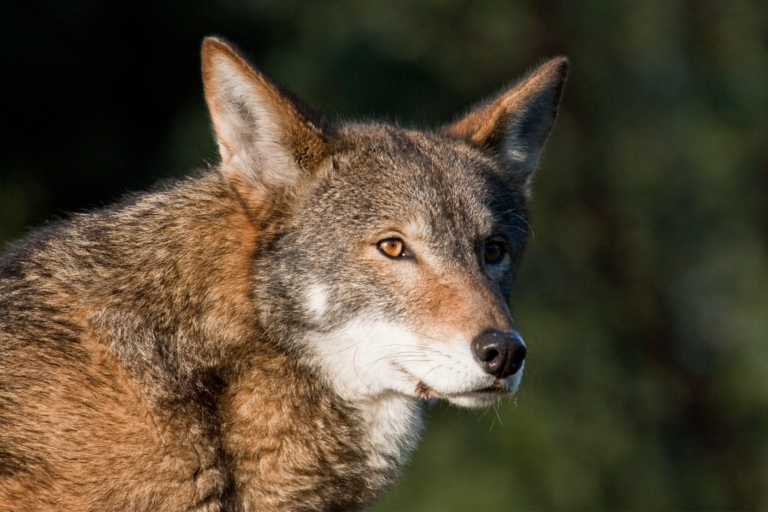
Red Wolf
The number of red wolves in the wild are so alarmingly scarce that these endangered canids are worth mentioning over and over again. As of October 2021, only 15-17 red wolves roam in the wild in a small refuge in eastern North Carolina. According to the U.S. Fish and Wildlife Service, continued climate change is a serious threat to these family-centered, social animals because their current location is only three feet above sea level. If sea levels rise, the limited range in which red wolves hunt and build their dens will be even further significantly reduced. Though they face other threats, red wolves are proof that climate change can also affect animal populations that are already heavily monitored and protected by federal laws.
ACT: Sign petitions that are close to meeting their target goal of signatures, like this letter to the US Fish & Wildlife Service and this petition to the governor of North Carolina. Support organizations and their conservation efforts in securing and designating habitats for red wolves.
For all animals that require our protection, you can start or sign petitions urging immediate action from government representatives. Spreading awareness by sharing information and resources is another way we can highlight the ongoing challenges these animals will face in the years to come.
References
Defenders of the Natural Forests. (2021, November 23). Climate change & the Canada lynx. https://defenders.org/publications/climate-change-canada-lynx
Environmental Conservation Online System. (2021, November 18). Canada Lynx (Lynx canadensis). U.S. Fish and Wildlife Service. https://ecos.fws.gov/ecp/species/3652
Hayward, Abi and Walker, Nick. (2018, June 1). Climate change is transforming Canada’s mountains. Canadian Geographic. https://www.canadiangeographic.ca/article/climate-change-transforming-canadas-mountains
Interagency Lynx Biology Team. 2013. Canada lynx conservation assessment and strategy. 3rd edition. USDA Forest Service, USDI Fish and Wildlife Service, USDI Bureau of Land Management, and USDI National Park Service. Forest Service Publication R1-13-19, Missoula, MT. 128 pp.
IUCN Red List. (2021, February). Animal species (kingdom, Animalia) by country, North America, 6(a). https://www.iucnredlist.org/statistics
National Geographic. (2021, November 23). Red wolves. https://www.nationalgeographic.com/animals/mammals/facts/red-wolf
National Geographic. (2021, November 23). Staghorn coral.
https://www.nationalgeographic.com/animals/invertebrates/facts/staghorn-coral
National Park Service (2021, November 23). Alpine Tundra Ecosystem. https://www.nps.gov/romo/learn/nature/alpine_tundra_ecosystem.htm
National Wildlife Federation. (2021, November 18). American Pika. https://www.nwf.org/Educational-Resources/Wildlife-Guide/Mammals/American-Pika
Nature Canada. (2021, November 23). Vancouver Island Marmot. https://naturecanada.ca/discover-nature/endangered-species/vancouver-island-marmot/
NOAA Fisheries. (2021, November 23). Kemp’s Ridley Turtle. https://www.fisheries.noaa.gov/species/kemps-ridley-turtle
Ritchie, Hannah and Roser, Max. (2021). Biodiversity. Our World In Data. https://ourworldindata.org/biodiversity
Simard, Amanda. (2021, November 18). Collared Pika. Nature Canada. https://naturecanada.ca/discover-nature/endangered-species/collared-pika/
Smithsonian Magazine. (2011, May 18). North America’s Most Endangered Animals. https://www.smithsonianmag.com/science-nature/north-americas-most-endangered-animals-174367735/
Smithsonian National Museum of Natural History. (2021, November 26). Extinction over time. https://naturalhistory.si.edu/education/teaching-resources/paleontology/extinction-over-time
U.S. Fish and Wildlife Service. (2021, November 18). Red wolf. https://www.fws.gov/southeast/wildlife/mammals/red-wolf/
WorldAtlas. (2021, November 18). 10 Most Threatened Animals In North America. https://www.worldatlas.com/articles/10-most-threatened-animals-in-north-america.html

